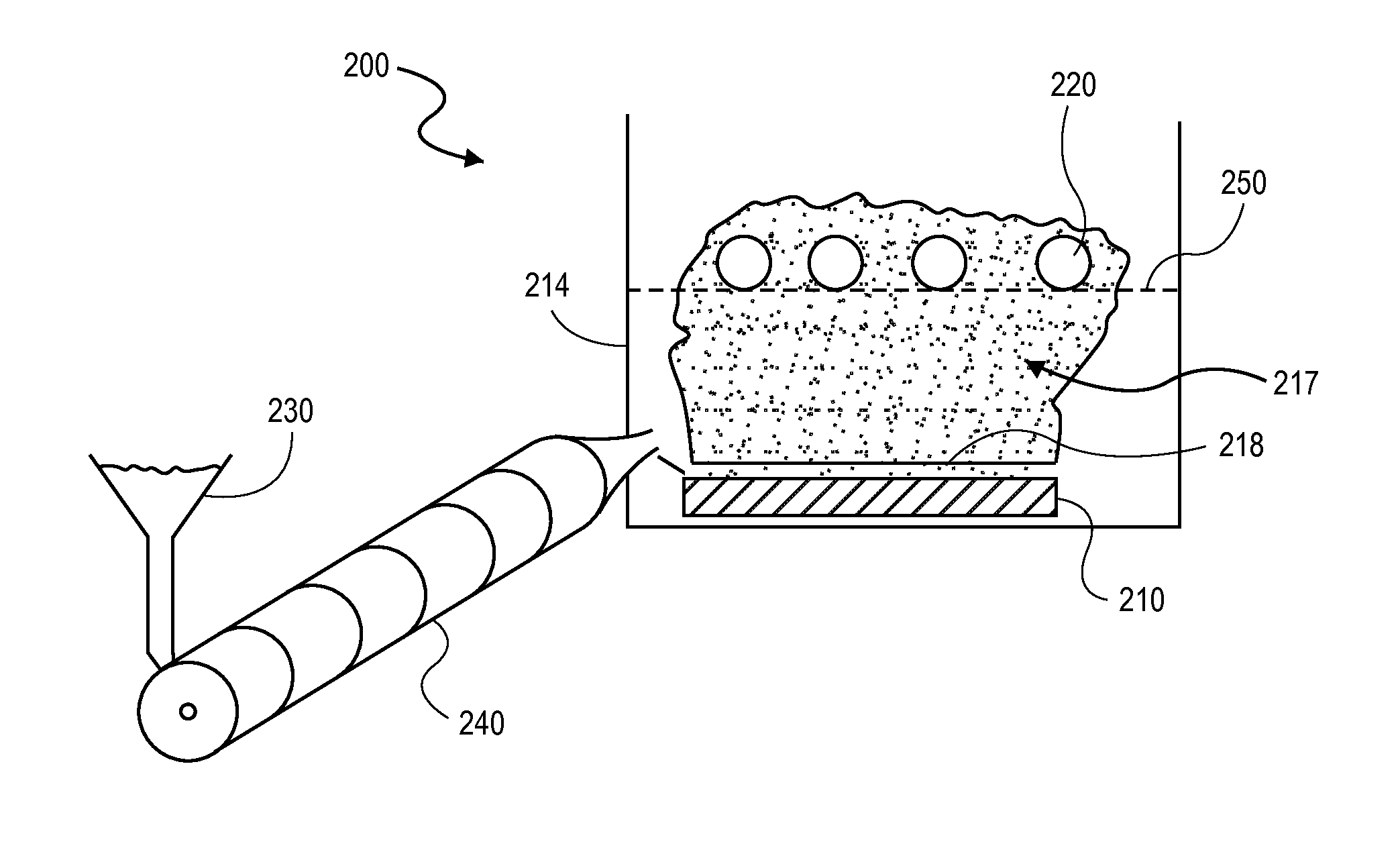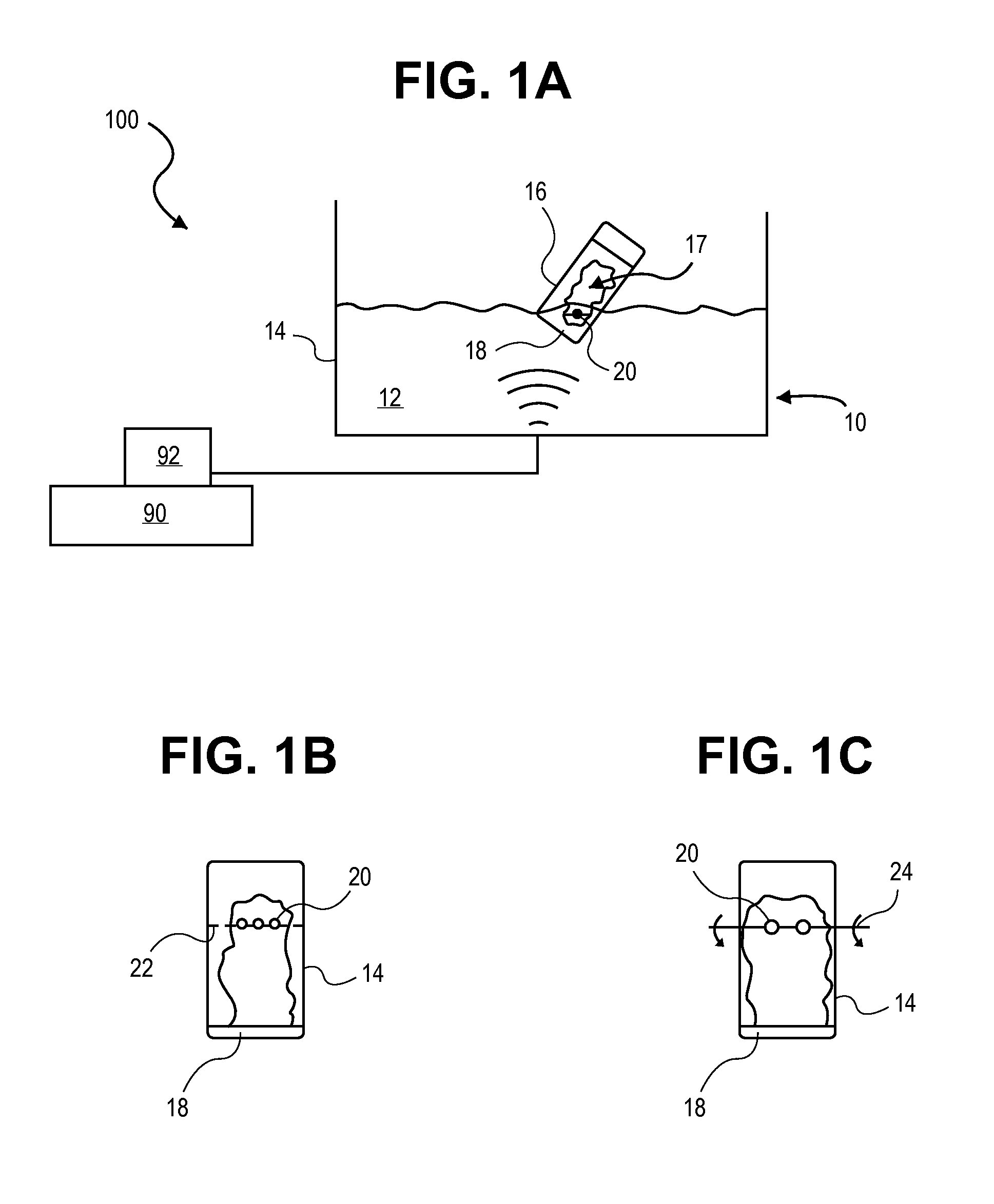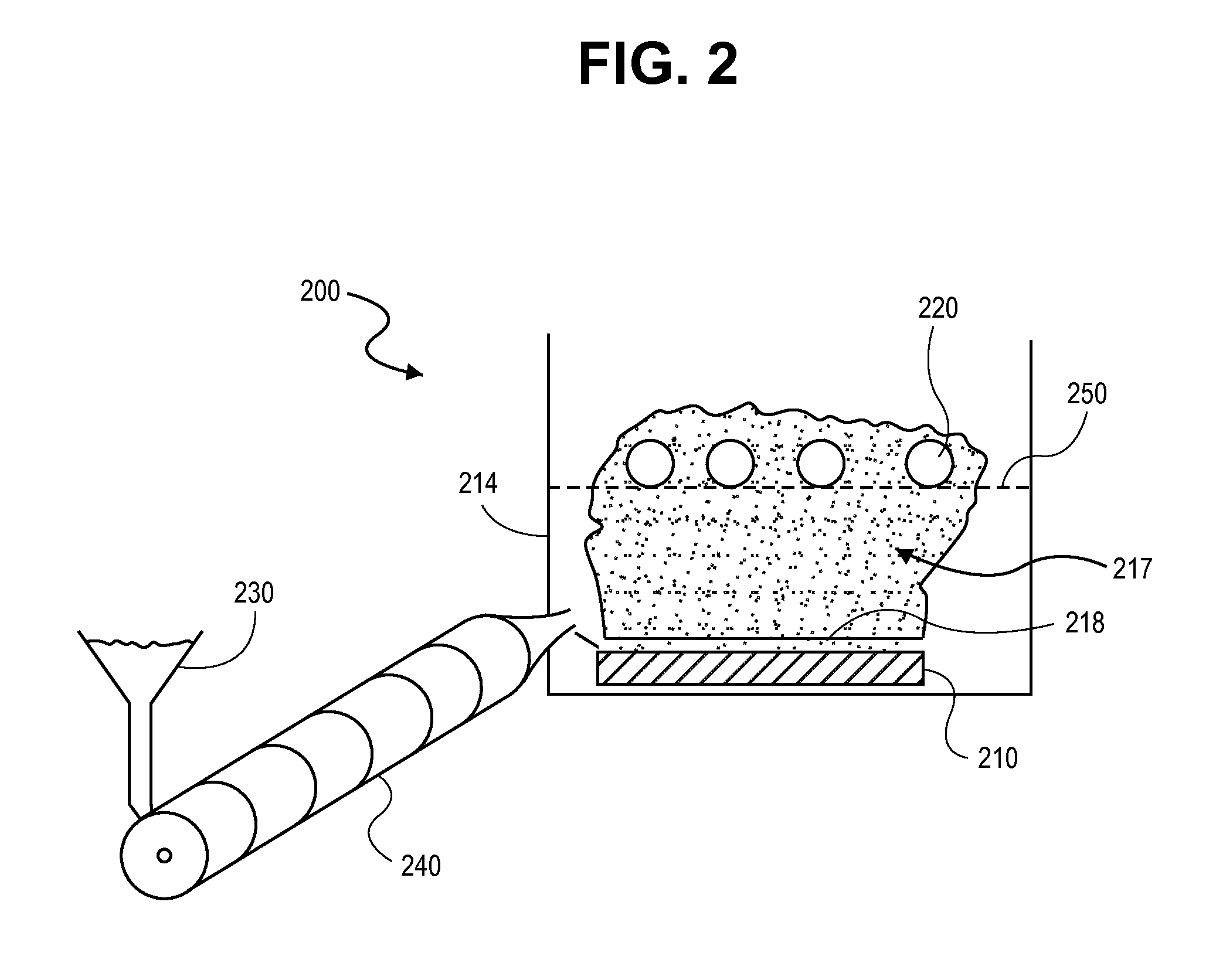Methods and systems for dosing and coating inhalation powders onto carrier particles
a technology of carrier particles and powders, which is applied in the field of dry powder inhalers, can solve the problems of toxic side effects, drug deposition in the mouth, throat or upper airways, and drug delivery is not without obstacles
- Summary
- Abstract
- Description
- Claims
- Application Information
AI Technical Summary
Benefits of technology
Problems solved by technology
Method used
Image
Examples
example 1
Bead Carrier Particles
[0044]Carrier particles, comprised of low density (3) polystyrene beads, with geometric diameter between 4.35 and 5.35 microns were placed into a glass vial (25 mL volume capacity) with micronized budesonide (d90<5 microns) as the active pharmaceutical ingredient. 1 polystyrene bead was placed into a vial in addition to 1 milligram of budesonide powder. The vial was lowered into an ultrasonicating water bath such that the section of the vial containing the drug and carrier particles was submerged beneath the water. When the ultrasonics were initiated, the budesonide powder was fluidized and aerosolized within the vial (it must be noted that the top of the vial was covered, preventing the escape of the aerosolized drug). The ultrasonics served to disperse the budesonide from an aggregated powder into individual primary particles of drug. These primary particles were aerosolized and dispersed throughout the vial, which deposited on the polystyrene carrier particl...
example 2
Flake Carrier Particles
[0046]Carrier particles were prepared in the following method. Flake-shaped carrier particles between 1 and 3 millimeters in length, 1 and 3 millimeters in width, 100 microns in thickness and composed of hydroxypropyl methylcellulose (HPMC) were obtained by fragmenting a HPMC two-piece capsule. The general shape of the resulting capsule fragments were of irregular quadrilaterals, fitting the above dimensions, although a more accurate description would be that they were polygons with non-uniform sides (both in length and number), and angles. 32.4 milligrams of HPMC carrier particles (the collective fragments of 1 piece of the original 2 piece capsule, capsule size 1) were placed into a glass vial (25 mL volume capacity). Added to this was 2 milligrams of micronized budesonide powder (primary particle size=d90<5 microns) as the active pharmaceutical ingredient. The vial was lowered into an ultrasonicating water bath such that the section of the vial containing t...
example 3
[0048]Approximately 2 milligrams of micronized budesonide drug powder (d50=2.10 micrometer) were placed in a 30-mL glass scintillation vial (1.5-mm wall thickness), into which was added a spherical polystyrene bead (approx. diameter: 4.5-6 mm). The lower portion (approx. one-half to one-third) of the glass vial was submerged below the water level in an ultrasonic cleaner (operating frequency=35 kHz). The ultrasonic cleaner was turned on for 2 minutes, causing the powdered drug to become dispersed into primary particle sizes (between 1-5 um) and aerosolized within the vial. As the aerosolized drug plume continuously passed over / around the polystyrene bead, drug particles deposited onto the surface of the bead and remained attached through interparticle forces (e.g. van der Waals interactions)
[0049]Referring now to FIG. 4, the mass of drug particle that is loaded / coated onto the surface of a polystyrene bead (carrier particle) plotted against the diameter of the bead for a 30-second c...
PUM
 Login to View More
Login to View More Abstract
Description
Claims
Application Information
 Login to View More
Login to View More - R&D
- Intellectual Property
- Life Sciences
- Materials
- Tech Scout
- Unparalleled Data Quality
- Higher Quality Content
- 60% Fewer Hallucinations
Browse by: Latest US Patents, China's latest patents, Technical Efficacy Thesaurus, Application Domain, Technology Topic, Popular Technical Reports.
© 2025 PatSnap. All rights reserved.Legal|Privacy policy|Modern Slavery Act Transparency Statement|Sitemap|About US| Contact US: help@patsnap.com



